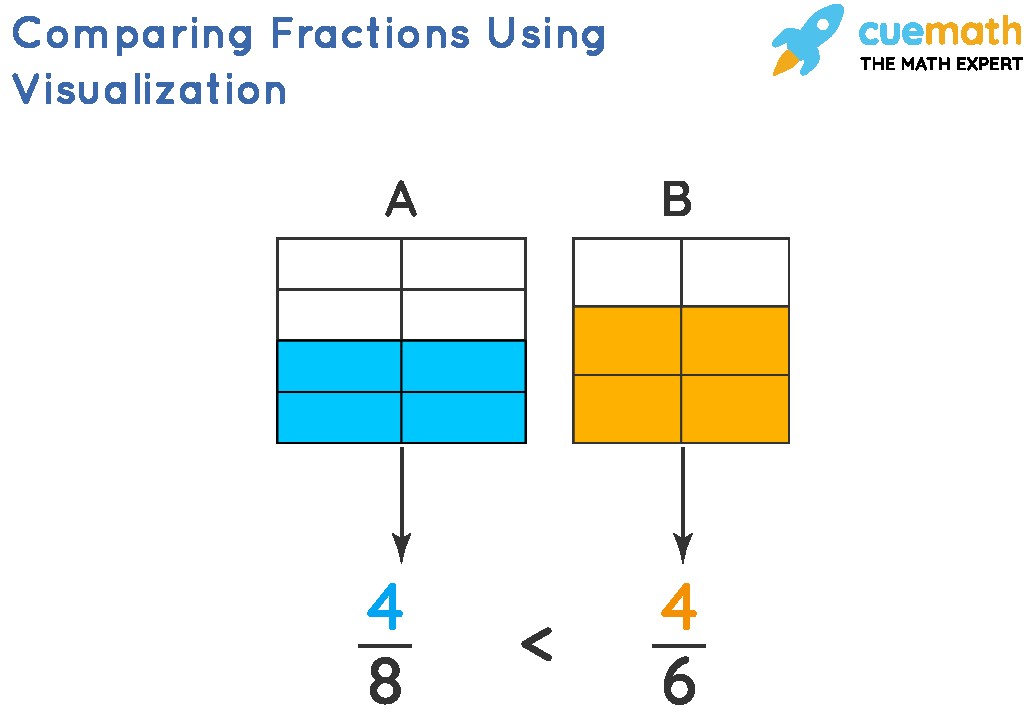Comparing fractions is a fundamental skill in mathematics, and it becomes remarkably straightforward when you’re dealing with fractions that share the same denominator. Understanding how to compare these types of fractions is a crucial stepping stone to mastering more complex fraction operations. This guide will walk you through the simple process of Comparing Fractions With The Same Denominator, ensuring you grasp the concept clearly and can apply it with confidence.
Understanding Fractions: Numerator and Denominator
Before diving into comparisons, let’s quickly recap the parts of a fraction. A fraction represents a part of a whole and consists of two main components: the numerator and the denominator.
- Numerator: This is the number on the top of the fraction bar. It tells you how many parts of the whole you have.
- Denominator: This is the number on the bottom of the fraction bar. It tells you how many equal parts the whole is divided into.
For example, in the fraction 3/4, ‘3’ is the numerator, and ‘4’ is the denominator. This means we have 3 parts out of a whole that is divided into 4 equal parts.
 Visual representation of a fraction 3/4 with 3 out of 4 parts shaded
Visual representation of a fraction 3/4 with 3 out of 4 parts shaded
The Rule for Same Denominators: Focus on the Numerator
When you are comparing fractions that have the same denominator, the process becomes incredibly simple. The denominator is already the same, meaning both fractions are dividing the whole into the same number of equal parts. Therefore, to determine which fraction is larger, you only need to compare the numerators.
The rule is:
When comparing fractions with the same denominator, the fraction with the larger numerator is the larger fraction.
Think of it like slices of a pizza. If you have two pizzas cut into the same number of slices (the denominator), then the pizza with more slices (the numerator) will represent a larger portion.
For instance, let’s consider comparing 2/5 and 4/5. Both fractions have a denominator of 5, meaning the whole is divided into 5 equal parts. To compare them, we simply look at the numerators: 2 and 4. Since 4 is greater than 2, the fraction 4/5 is greater than 2/5. We can write this as:
2/5 < 4/5
Step-by-Step Guide to Comparing Fractions with the Same Denominator
Here’s a simple step-by-step guide to comparing fractions with the same denominator:
Step 1: Identify the Denominators.
Look at the denominators of the fractions you want to compare.
Step 2: Check if the Denominators are the Same.
Verify that both fractions have the same number in the denominator position.
Step 3: Compare the Numerators.
If the denominators are the same, compare the numerators (the top numbers).
Step 4: Determine the Larger, Smaller, or Equal Fraction.
- If the numerators are different, the fraction with the larger numerator is the larger fraction.
- If the numerators are the same, the fractions are equal.
Example 1: Comparing 3/8 and 5/8
- Denominators: Both fractions have a denominator of 8.
- Same Denominators? Yes, they are the same.
- Compare Numerators: Compare 3 and 5. 5 is greater than 3.
- Conclusion: Therefore, 5/8 is greater than 3/8 (3/8 < 5/8).
Example 2: Comparing 7/11 and 2/11
- Denominators: Both fractions have a denominator of 11.
- Same Denominators? Yes.
- Compare Numerators: Compare 7 and 2. 7 is greater than 2.
- Conclusion: Therefore, 7/11 is greater than 2/11 (2/11 < 7/11).
Example 3: Comparing 4/9 and 4/9
- Denominators: Both fractions have a denominator of 9.
- Same Denominators? Yes.
- Compare Numerators: Compare 4 and 4. They are equal.
- Conclusion: Therefore, 4/9 is equal to 4/9 (4/9 = 4/9).
Why This is Important
Mastering the comparison of fractions with the same denominator is more than just a simple math skill. It builds a strong foundation for understanding fractions in general and is crucial for:
- Simplifying Fractions: Understanding size helps in simplifying fractions to their lowest terms.
- Adding and Subtracting Fractions: This concept is essential when you move on to adding and subtracting fractions, especially those with like denominators.
- Real-World Applications: From cooking and baking to understanding proportions and ratios in science and everyday life, comparing fractions is a practical skill.
Conclusion: Comparing Numerators is Key
Comparing fractions with the same denominator is a straightforward process. By focusing solely on the numerators, you can quickly and accurately determine which fraction represents a larger portion of the whole. This skill is a fundamental building block in your mathematical journey, paving the way for more complex fraction operations and a deeper understanding of numerical relationships. Remember, when the denominators are the same, the numerator tells the tale!
